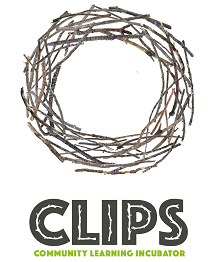Summary of Methods

Individual
Every community consists of individuals. A community can thrive only if individuals are honoured and respected. Individuals tend to thrive in a community if they approach life with a “learner’s attitude”, acknowledging that all they encounter is a part of the learning journey and therefore valuable, even if it turns out to be different than what they anticipated. Individual growth and community building work best in tandem when tools for deep sharing and feedback are consciously applied.

Community
Community building does not happen by itself, it must be fostered consciously. Among basic requirements are common joyful activities and sharing in everyday life. Conflicts and difficulties are opportunities for designing appropriate organisation that supports community spirit. The form of organisation and the means of conflict resolution should be complementary.

Intention
Shared intention takes people beyond the assumption that “we all want to go in the same direction”. A clear, distinct intention gives orientation, especially in times when the group loses its track, unclear which way to go. Unclear intention can become a source of conflict, confusion and misunderstanding, therefore clarity should be pursued by all means. A sign of clarity is that members find intention statements (vision, mission, aim, and purpose) meaningful and identify with them. CLIPS Guide outlines examples of clearly formulated shared intentions which can serve the group well

Structure
Efficient cooperation requires shared agreements, for instance on decision making, organising finances, legal representation etc. These belong to the layer of Structure, and are, sadly, often neglected. Unclear structures are among key causes of long-term problems in group projects. On the other hand well developed structures, when disconnected from other layers, tends to be repressive and short-termed.

Practice
Practice brings projects come to life, and the group’s aspirations, ideals and goals become manifest and visible to the world. Ideally, Practices stem from coherent Intentions and Structures, when also a good balance between Individual and Community is achieved. Project implementation involves fruitful relationship between all the layers, and at the same time a malfunctioning practice can be leading back to confusion and dysfunctions. Shared practices, such as eating together, working together, sharing daily activities, will create healthy and consistent “rhythms” and “patterns” in community living.

Diagnostic Methods
In times of trouble, situations can become blurry and the common direction lost, creating confusion and anxiety. Understanding the group’s strengths and weaknesses, and focusing on the mostly affected layer(s), a CLIPS facilitator can identify the actual challenges and help people get back on track. Diagnostic tools are also useful for group members to analyze the situation from their personal perspective, and share it with the others to create together “the big picture”. We offer several methods that suit different styles and approaches, depending on the context and specific group need.
The CLIPS Methods Collection
We are offering a collection of all our CLIPS Methods, translated into our projects languages, to download for free.
Contribute
Feel free to contact us and share your own tools!

